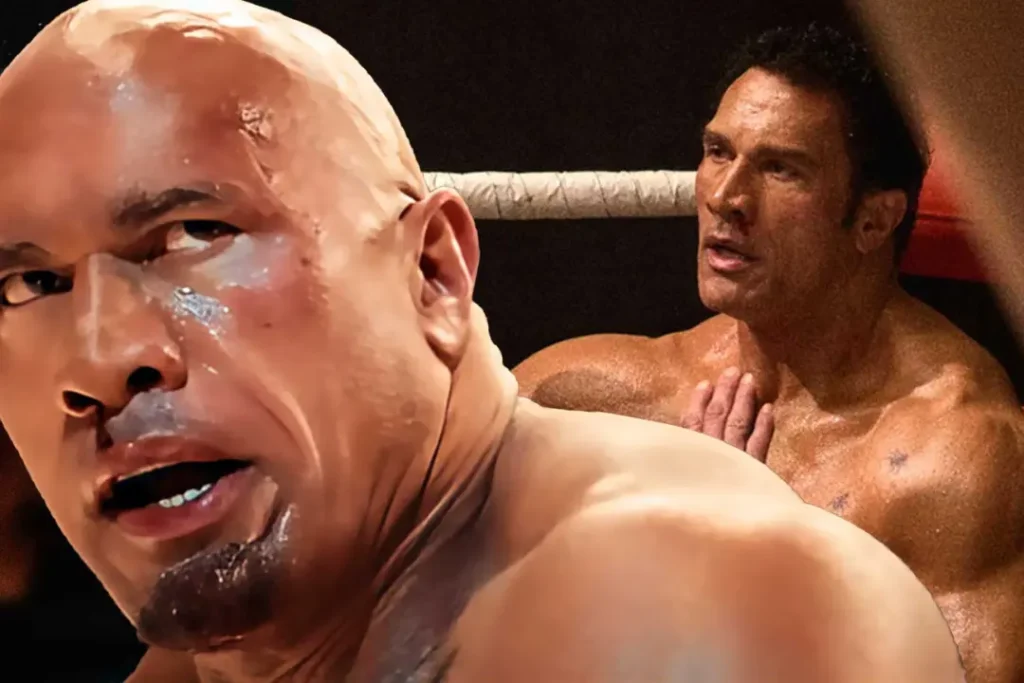Dwayne Johnson’s Dramatic Turn in The Smashing Machine: Mark Kerr’s Story, a Venice Premiere and a 60-Pound Transformation

When Dwayne “The Rock” Johnson steps into a role, he usually brings blockbuster brawn and a grin that fills the screen. In The Smashing Machine, however, he does something different — and, frankly, brave. The film, directed by Benny Safdie, reimagines the real-life rise and tragic spiral of mixed-martial-arts champion Mark Kerr, and Johnson showed up at the Venice Film Festival looking almost unrecognisable: markedly slimmer, quieter and visibly changed. That transformation has become the story nearly as quickly as the movie itself. (E! Online, The Guardian)
From Documentary to Drama: A Famous Story Gets a New Coat of Paint
Mark Kerr’s life was already the subject of a hard-hitting 2002 documentary, The Smashing Machine: The Life and Times of Extreme Fighter Mark Kerr, which followed his meteoric rise in MMA, his battles with injuries and addiction, and the toll fame took on his private life. That documentary remains a raw, intimate portrait of combat sports at the turn of the century and is often credited with giving viewers a window into how brutal — physically and emotionally — the early MMA circuit could be. The new feature is a dramatic retelling: it doesn’t replace the documentary’s vérité truth, but it does aim to bring Kerr’s story to a broader, contemporary audience. (Wikipedia)
Director Benny Safdie — known for tightly wound, character-driven films — takes Kerr’s life as the raw material for a story about obsession, pain and identity. Safdie’s sensibility seems a natural fit: he’s drawn to characters under pressure, and Kerr is a study in pressure. The casting of Johnson, who is probably the most recognisable action star in the world, sets up a fascinating tension — the public expectation of a musclebound hero versus the private unravelling of a man who made his body both weapon and victim. Early reviewers noted that Johnson’s performance is one of the film’s most provocative choices; the casting forces audiences to reconsider what they think they know about the actor and about masculinity more broadly. (The Guardian)
The Weight Loss That Stole the Headlines
What pushed conversation into overdrive was not just the film itself but Johnson’s physical change. Photos and red-carpet appearances from the Venice premiere show him markedly leaner than his blockbusting image — reports estimate he shed roughly 60 pounds to inhabit Kerr’s frame, dropping from his customary near-300-pound stage to somewhere around the mid-240s. The decision appears to be part role preparation and part necessity: playing a real fighter who struggled with injuries and weight swings required a different silhouette, and Johnson has publicly referenced health issues and medical treatment he’s navigated over the past year. (E! Online, The Independent)
That kind of transformation invites instant public reaction. Social media swung between praise for his commitment, curiosity about his methods, and genuine concern about his health — some fans wondered whether such a dramatic drop was healthy or sustainable, especially for a man whose brand is tied to amplified physical presence. Journalists and columnists picked up the thread, and the story became a kind of cultural Rorschach test: do we applaud the actor for his artistic risk, or should we worry about what such transformations say about body standards and celebrity pressure? (Indiatimes, The Times of India)
Premiere and Response: Venice, Standing Ovations, and Early Reviews
The Venice Film Festival premiere was the movie’s big moment, and it didn’t go unnoticed. Reports from the festival say Johnson received a prolonged, rapturous reaction — a standing ovation that expressed respect both for the film and for the length of the actor’s commitment to the role. Critics have been quick to weigh in, and early reviews highlight Safdie’s direction and Johnson’s willingness to subvert his larger-than-life persona. Some reviewers call the casting a provocation that works: the film expects audiences to be unsettled by seeing The Rock play someone who is collapsing instead of conquering. (E! Online, The Guardian)
If you’re wondering about when the general public will get a chance to judge for themselves, studio and festival materials indicate a fall theatrical rollout. A trailer and distribution notes attached to festival screenings list an October release date for theatres (marketing copies have cited October 3), with festival exposure likely to shape awards buzz and wider audience anticipation in the weeks that follow. That October window positions The Smashing Machine as a potential fall awards entrant — exactly the kind of release pattern that encourages serious discussion rather than purely summer-blockbuster spectacle. (YouTube)
Why Mark Kerr’s Story Still Matters
On the surface, this is a sports movie about an athlete. Under the surface, it’s about pain, identity and the cost of a profession when that profession literally breaks your body. For younger fans who know MMA as a polished, global sport, Kerr’s era reads almost like a different planet — a rougher, less regulated time when fighters often managed injuries and finances alone. The 2002 documentary captured that era’s grit; the new film reframes it for a time when audiences expect character arcs and psychological nuance as much as fight choreography.
Kerr’s personal issues — his reliance on painkillers, the breakdown of relationships, and the question of whether sport provided meaning or just a way to survive — are sadly timeless. They intersect with ongoing conversations about athlete welfare, mental health and how we as viewers glorify violence while often ignoring the human cost behind the spectacle.
What This Means for Dwayne Johnson’s Career
This role marks a notable pivot for Johnson. Where his filmography once leaned heavily on spectacle — franchises, action comedies, superhero swagger — The Smashing Machine asks him to be quiet, interior and thin. That kind of role can recalibrate an actor’s trajectory; it allows critics and viewers to see range, and it can open the door to more dramatic projects. The risk, of course, is losing a part of the audience that came for the old image. But art careers are long, and reinvention is often rewarded. Early festival reactions suggest that Johnson’s gamble could pay off by delivering a performance that haunts more than it entertains. (The Guardian, E! Online)
What to Expect Next: Release and Viewing Options
If you’re tracking release dates and want to plan to see it, take note: the film has festival premieres already, and the theatrical release is slated for early October in several markets. From there, streaming windows will depend on distribution deals formed after festival play and box office reception. If you’re a fan of the original 2002 documentary, consider watching it before the feature; it helps anchor the drama in documentary fact and makes many of the film’s choices feel richer. (YouTube, Wikipedia)
Conclusion: A Risk Worth Watching
The Smashing Machine is one of those films where the conversation around it becomes part of the art. Johnson’s weight loss, Safdie’s stark direction and Kerr’s tragic real-life arc have combined to create a moment that’s about more than just movie marketing — it’s about how we tell stories of pain, recovery and identity in sports. Whether you come for the fights, the performance, or the cultural conversation, this movie promises to leave an impression. If the festival reaction is any indicator, it’s a movie that will be discussed long after the credits roll.



